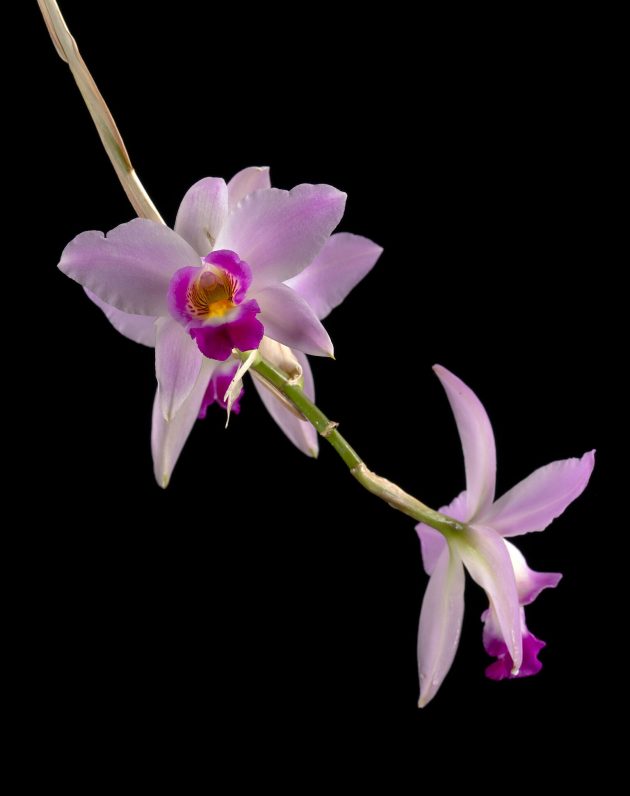See thousands of orchids in incredible detail in the Smithsonian's newly digitized collection
No green thumb? You don’t need to water these dazzling orchids to enjoy them. More than 8,000 living specimens in the Smithsonian Gardens Orchid Collection have been digitized and are now available to see and study from anywhere in the world. The Smithsonian’s Mass Digitization Program, in association with the National Collections Program, started photographing the plants in December 2017 and recently put the complete collection online. Digitization allows anyone with the internet to have access to the orchids year-round and without traveling to Washington, D.C., where some are on view for a few months during an annual orchid exhibition. You can search for specific plants by name, taxonomy or flower color and see multiple views of each specimen in high-resolution photos.

Maintained in a Smithsonian greenhouse facility in Maryland, the collection—established in 1974 with five plants—is considered a globally important repository of orchid biodiversity. It’s the third largest orchid species collection held by a public garden in the world. “The orchid collection is an invaluable resource for scientific research, educational programs and exhibitions across the Smithsonian,” says Nathan Anderson, program officer with the Smithsonian’s Digitization Program Office, who worked on the project. Digitizing the orchids lets staff track changes in their size, blooms and other characteristics over time.

And it also means the collection is accessible for study beyond the Smithsonian. Smithsonian Gardens and Digitization Program Office staff involved in this effort hope the online collection will be a well-used resource by orchid scholars and universities. It’s already being used for educational programs, and to check nomenclature (or naming) by the American Orchid Society and National Capital Orchid Society. So what does “digitization” really mean? “Essentially digitization is just another term for the photography,” Anderson says. The digitization staff used high-resolution (80 megapixel) digital cameras to capture the fine details, like the stamen, on a small orchid flower. The team shot multiple angles of every plant then integrated the images into the collection, which includes more information about the piece (in this case, details such as species, area where it grows and common plant names).

For the orchid collection, they worked at a rate of about 120 orchids a day. While they have digitized more than 1 million objects from the Smithsonian collection, working with living organisms is a new endeavor for the digitization staff. You can’t treat a rare, blooming plant the same as you would a silver teapot. “Certain considerations like handling, grooming and prepping the plants prior to being photographed were unique to this collection and certainly different from a non-living or archival collection,” Anderson says.

The team cleaned water spots off the orchid leaves, and staked long and spindly flower stalks with twine. They also had to be careful to avoid cross-contamination in the area—several orchid viruses can be spread from physical contact, so they cleaned the photography staging space between each plant’s moment in the spotlight. The orchid project is also a change from the hundreds of thousands of botany specimens previously digitized using a conveyor belt. Those plants (from the Smithsonian’s National Museum of Natural History) are dead and pressed, and though they are a valuable scientific resource, their appearance is not as vibrant as the living orchids. The orchids are the first living Smithsonian collection to be mass digitized, and they will continue to bloom—digitally—every month of the year.

